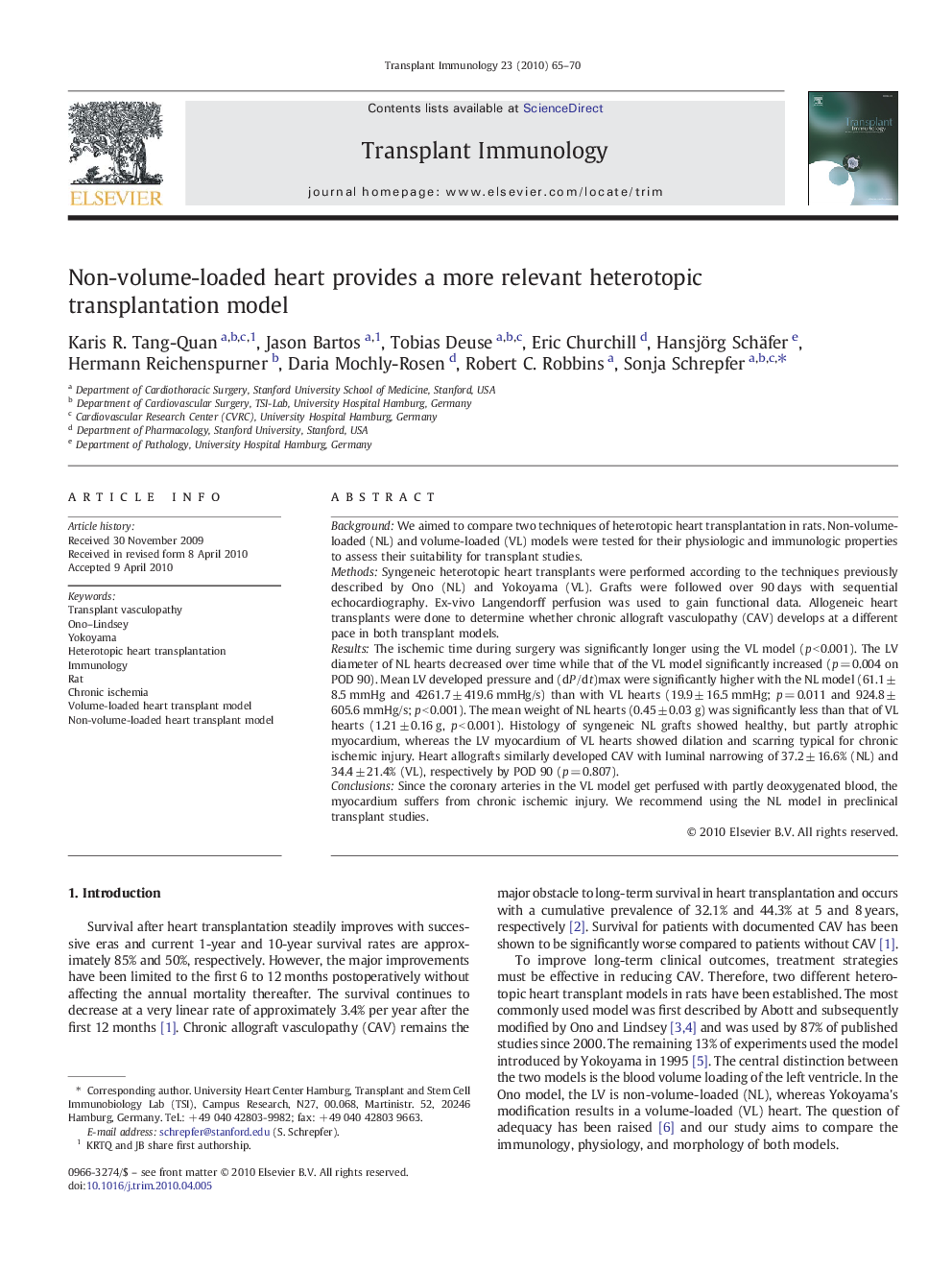| Article ID | Journal | Published Year | Pages | File Type |
|---|---|---|---|---|
| 3392248 | Transplant Immunology | 2010 | 6 Pages |
BackgroundWe aimed to compare two techniques of heterotopic heart transplantation in rats. Non-volume-loaded (NL) and volume-loaded (VL) models were tested for their physiologic and immunologic properties to assess their suitability for transplant studies.MethodsSyngeneic heterotopic heart transplants were performed according to the techniques previously described by Ono (NL) and Yokoyama (VL). Grafts were followed over 90 days with sequential echocardiography. Ex-vivo Langendorff perfusion was used to gain functional data. Allogeneic heart transplants were done to determine whether chronic allograft vasculopathy (CAV) develops at a different pace in both transplant models.ResultsThe ischemic time during surgery was significantly longer using the VL model (p < 0.001). The LV diameter of NL hearts decreased over time while that of the VL model significantly increased (p = 0.004 on POD 90). Mean LV developed pressure and (dP / dt)max were significantly higher with the NL model (61.1 ± 8.5 mmHg and 4261.7 ± 419.6 mmHg/s) than with VL hearts (19.9 ± 16.5 mmHg; p = 0.011 and 924.8 ± 605.6 mmHg/s; p < 0.001). The mean weight of NL hearts (0.45 ± 0.03 g) was significantly less than that of VL hearts (1.21 ± 0.16 g, p < 0.001). Histology of syngeneic NL grafts showed healthy, but partly atrophic myocardium, whereas the LV myocardium of VL hearts showed dilation and scarring typical for chronic ischemic injury. Heart allografts similarly developed CAV with luminal narrowing of 37.2 ± 16.6% (NL) and 34.4 ± 21.4% (VL), respectively by POD 90 (p = 0.807).ConclusionsSince the coronary arteries in the VL model get perfused with partly deoxygenated blood, the myocardium suffers from chronic ischemic injury. We recommend using the NL model in preclinical transplant studies.
